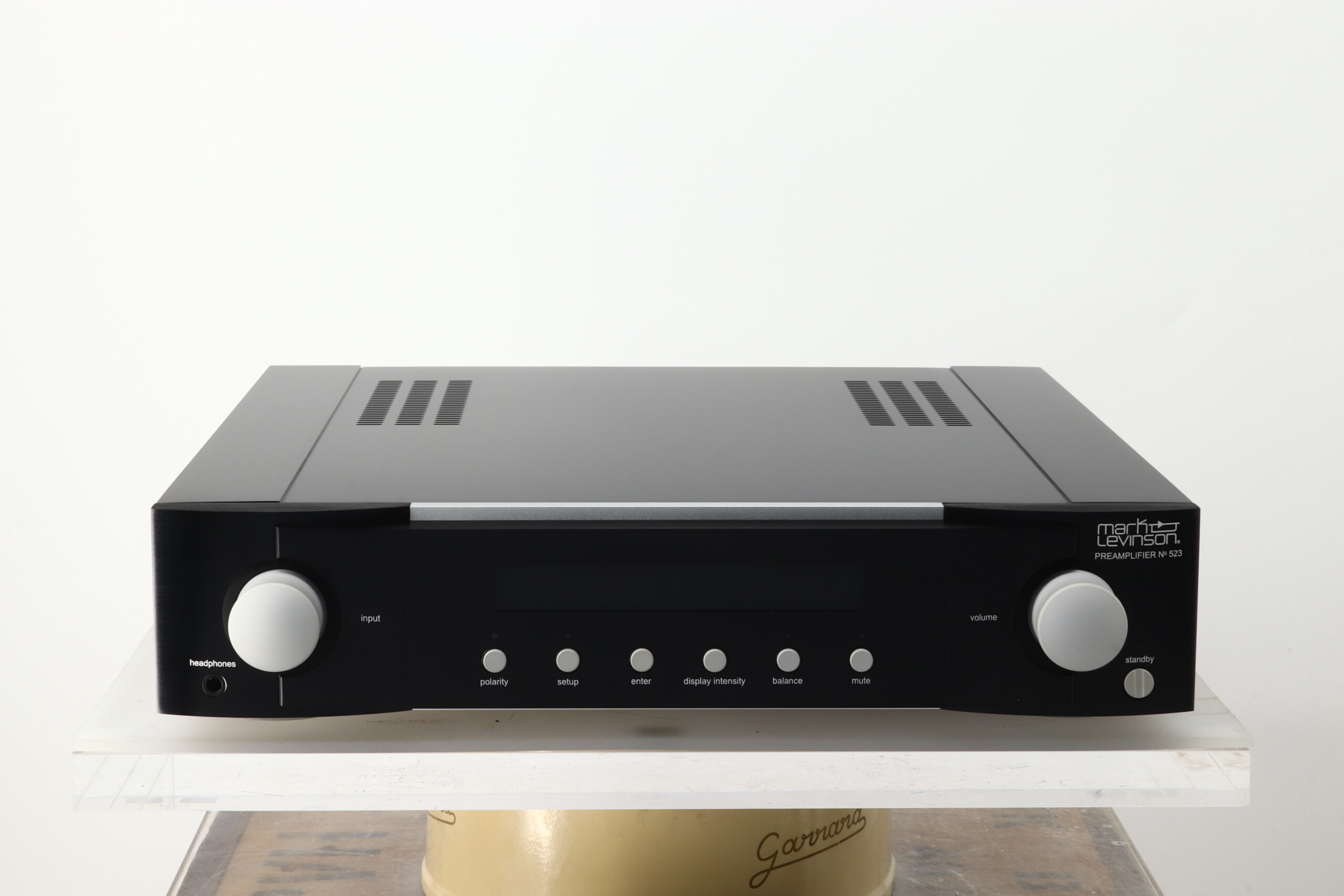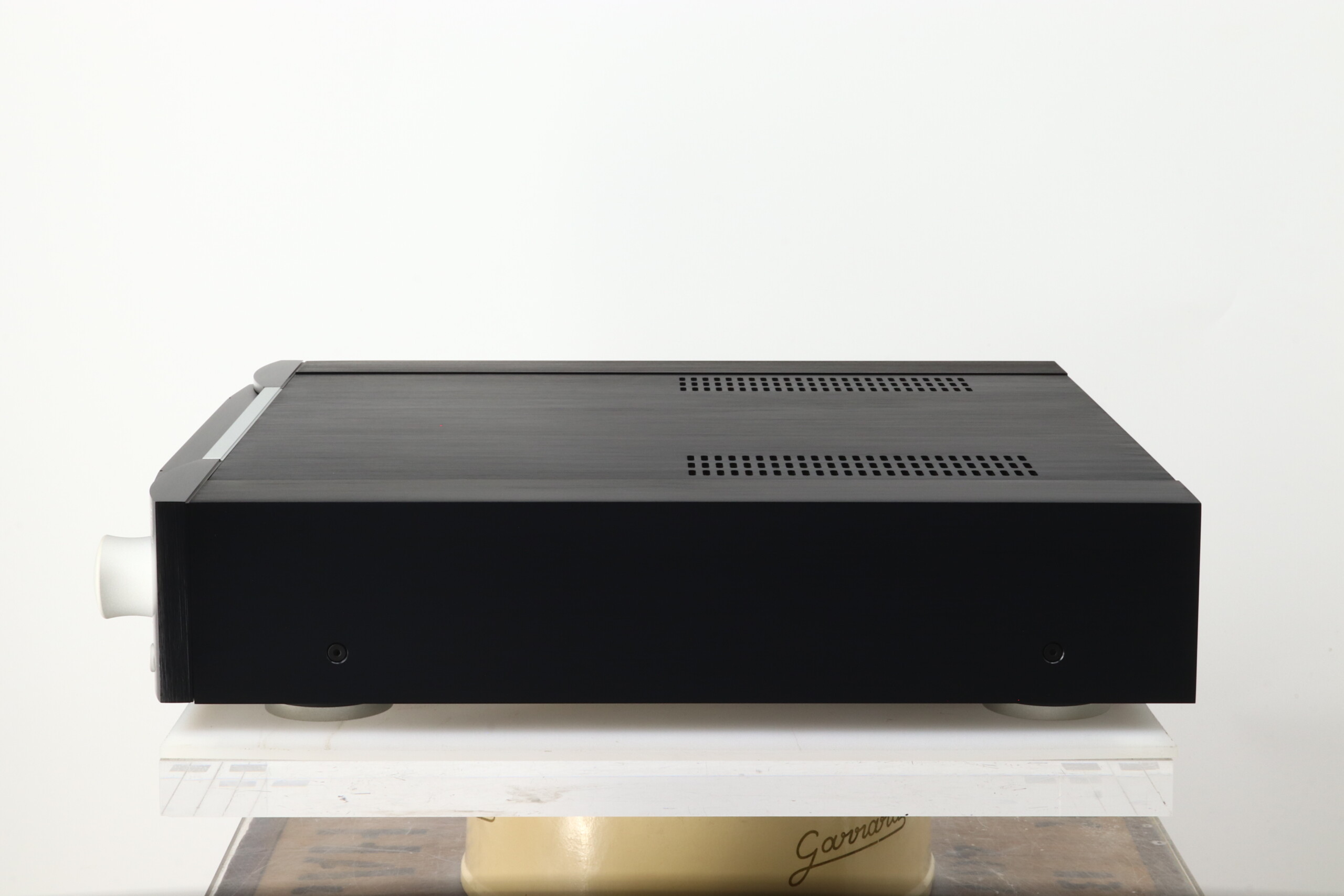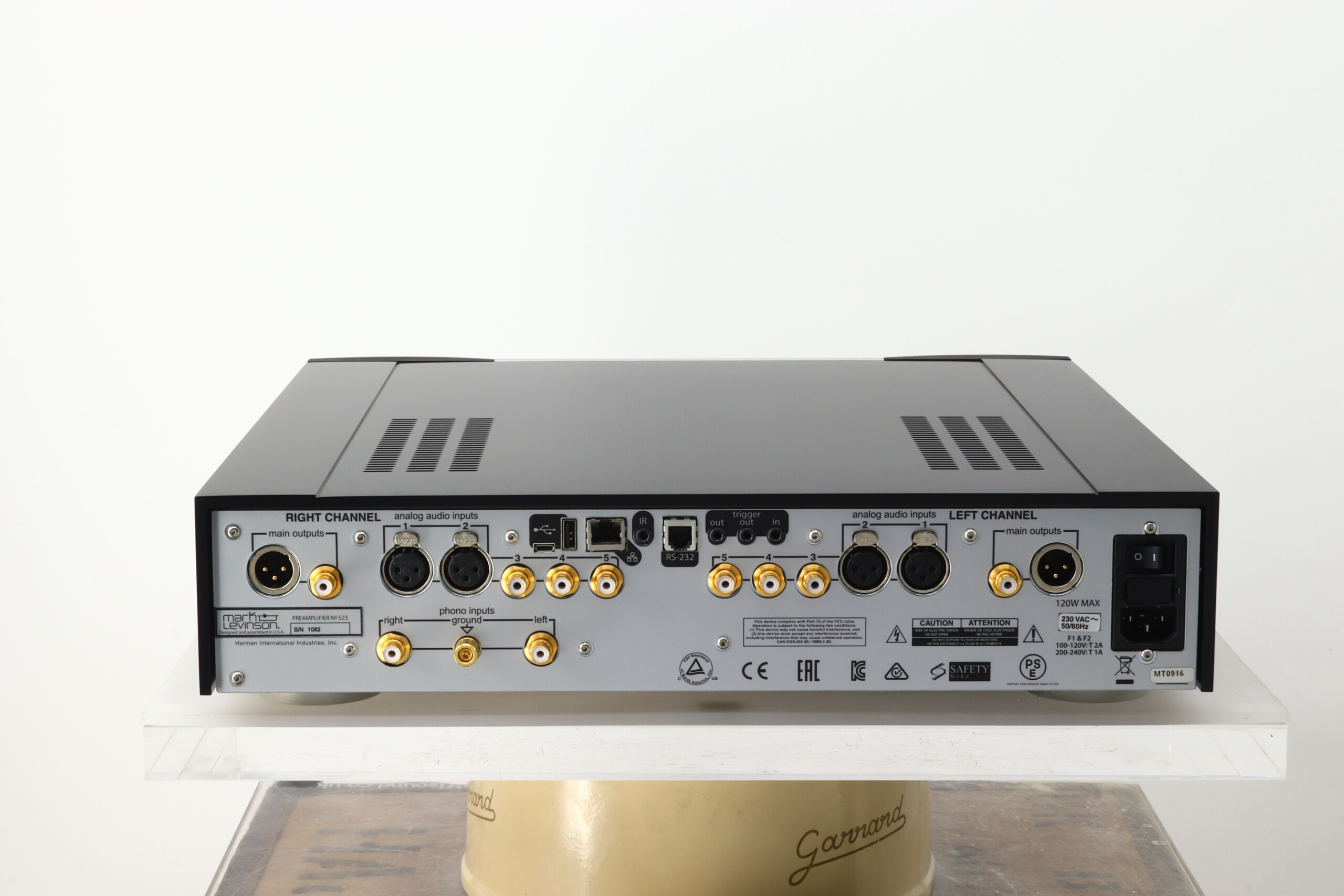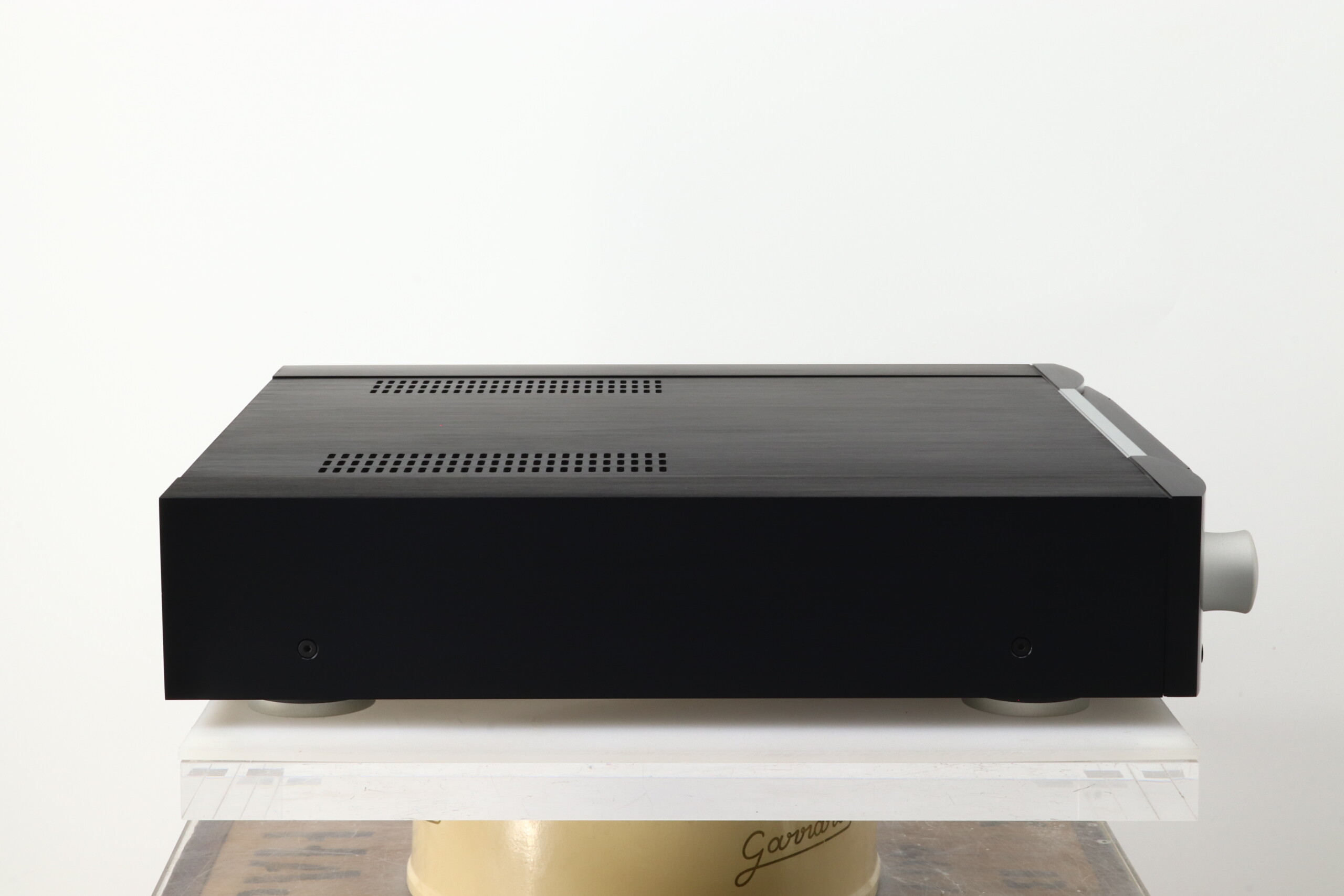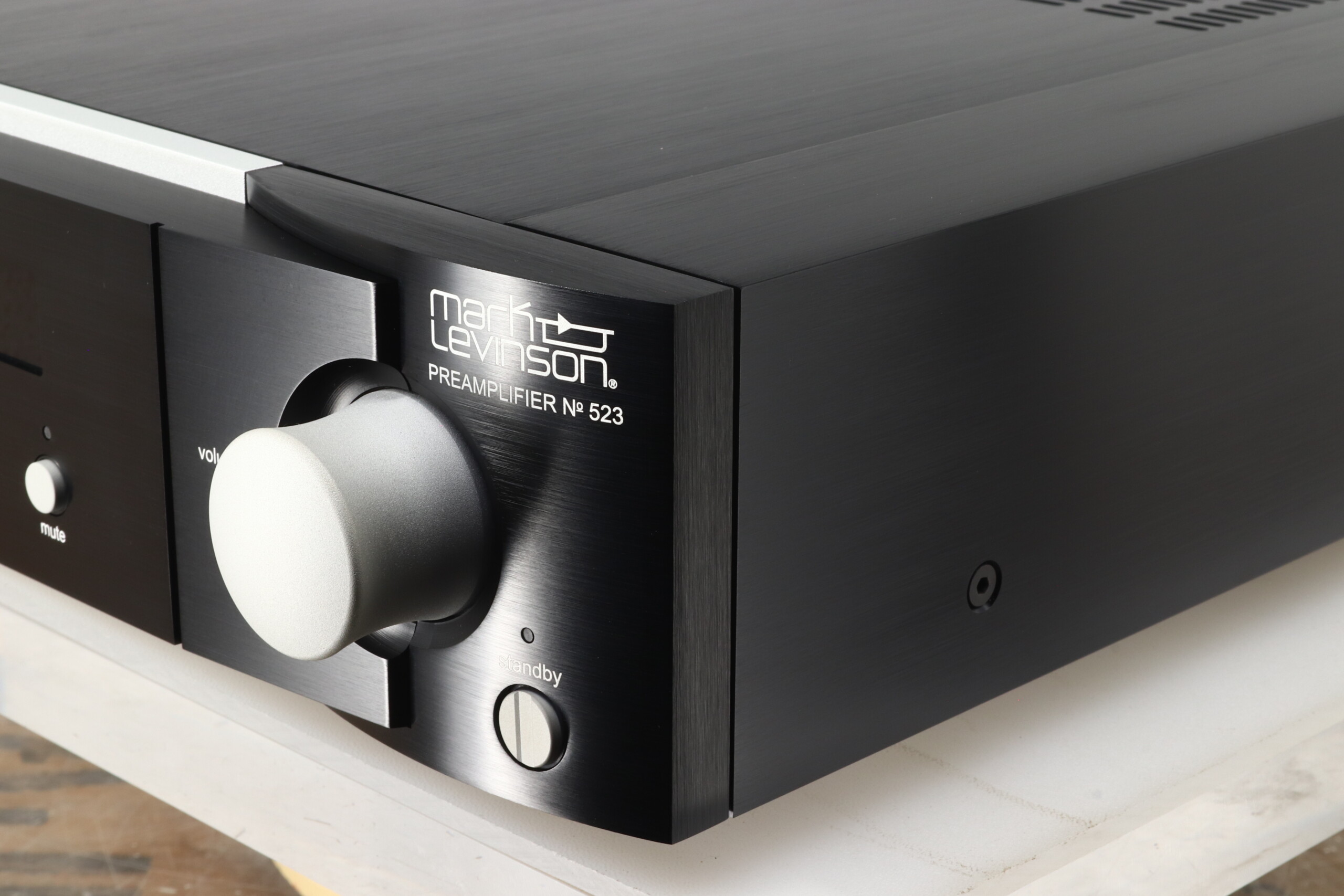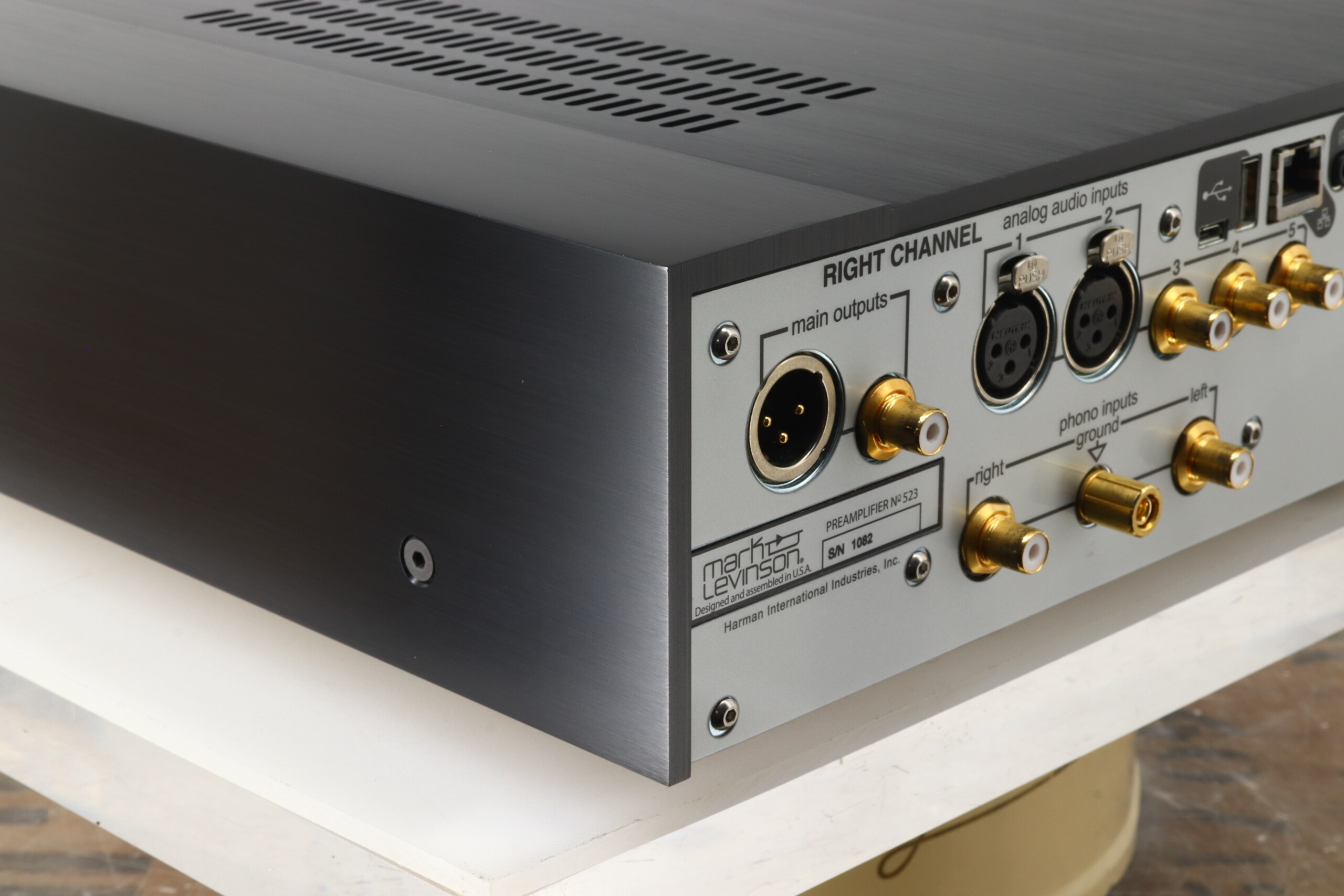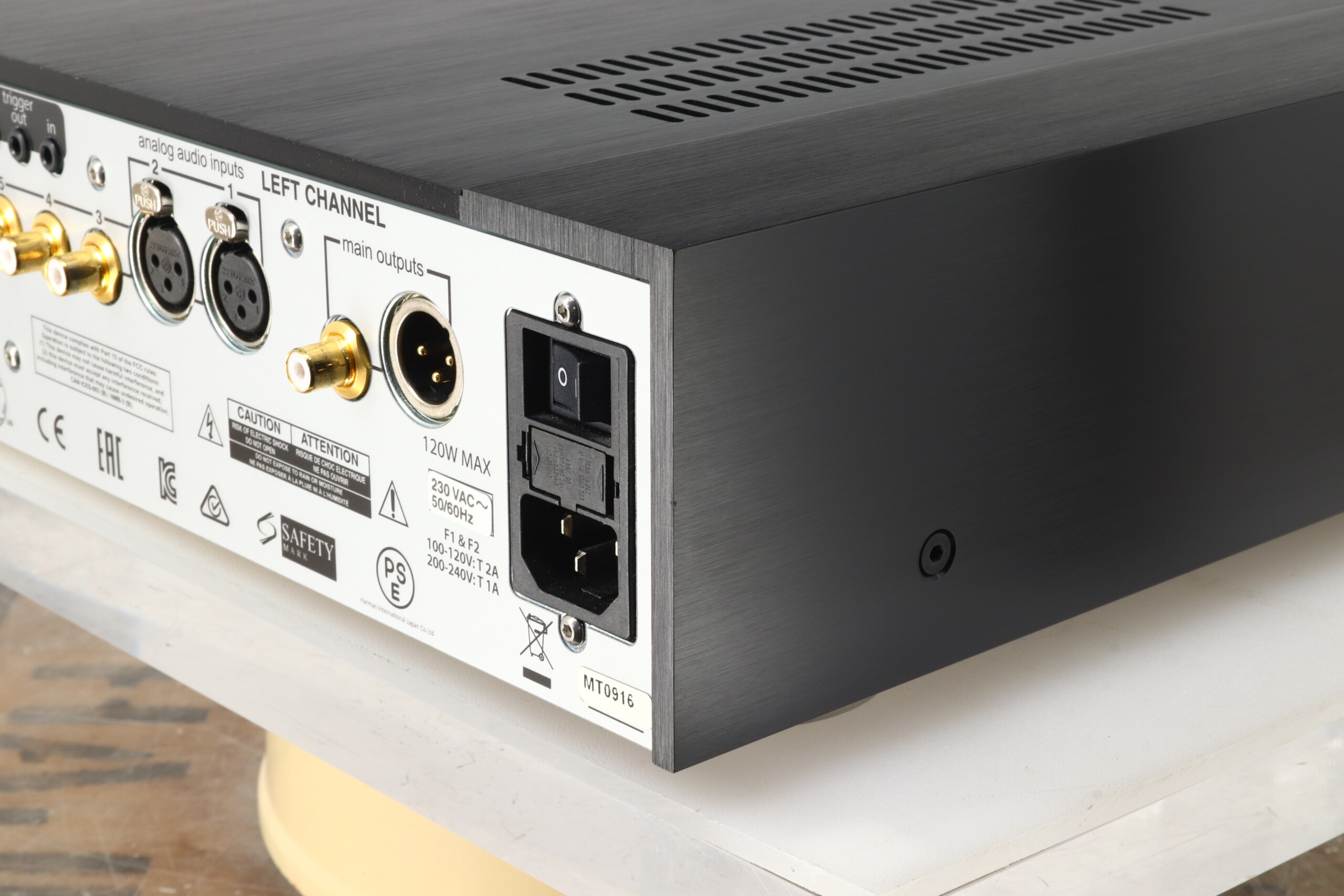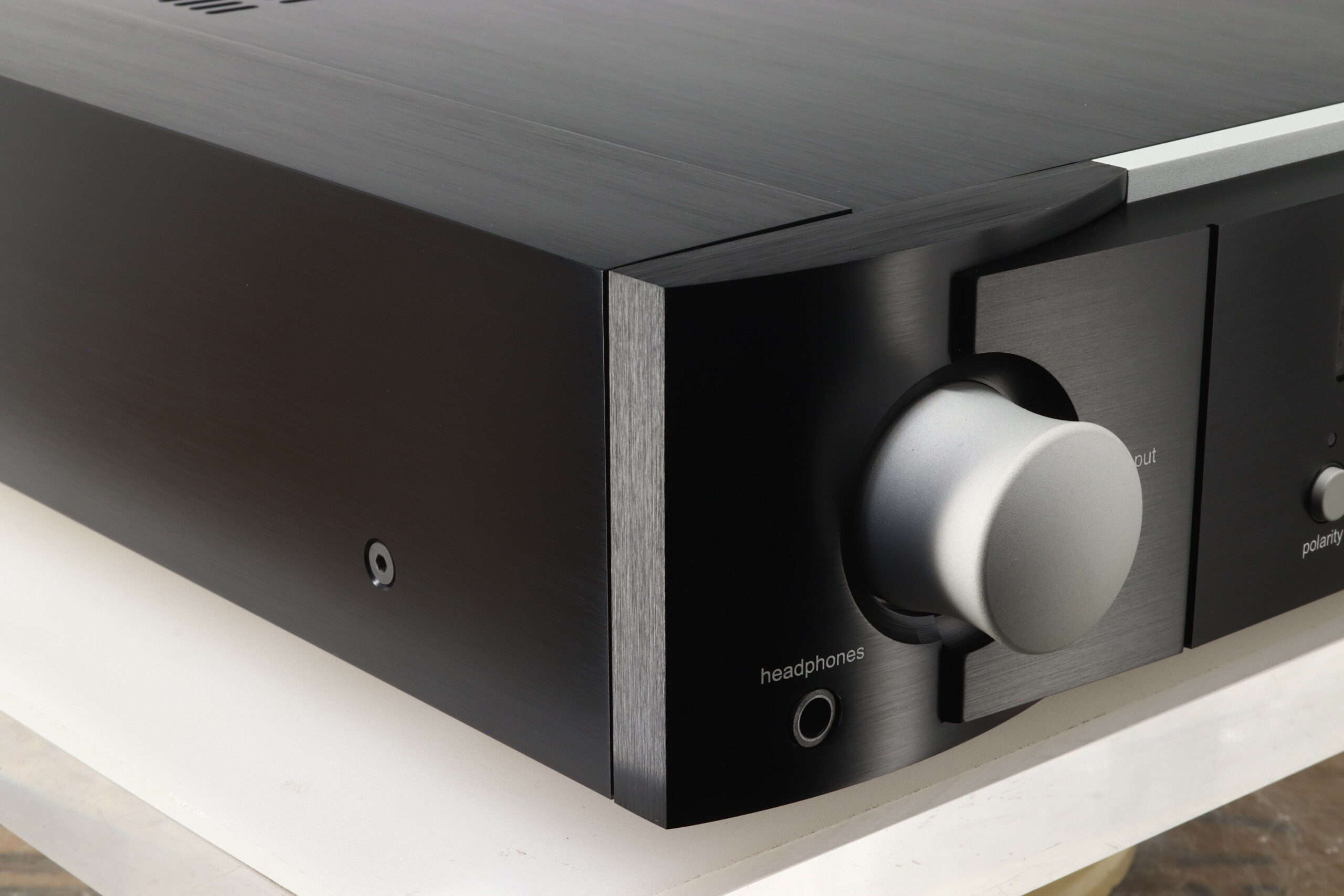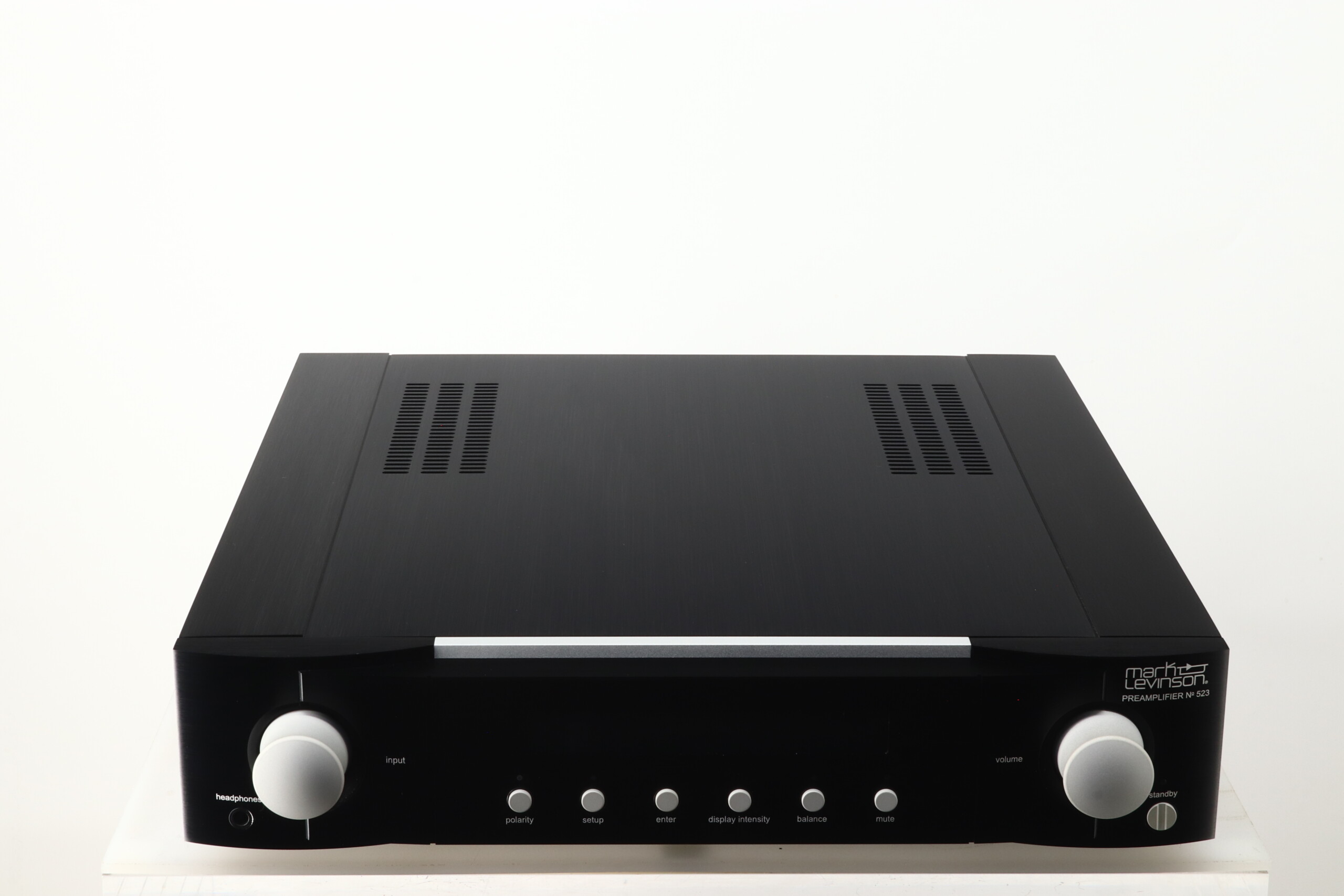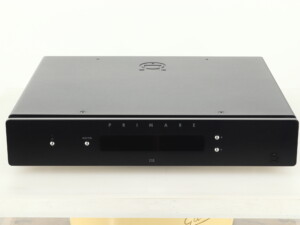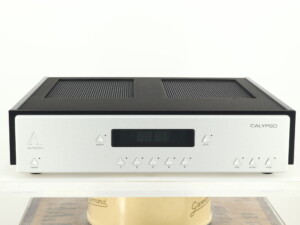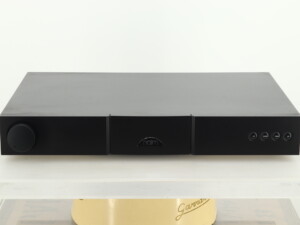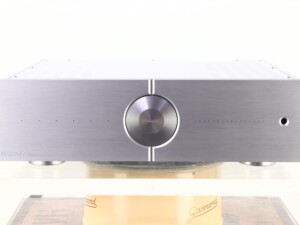Your basket is currently empty!
- You cannot add that amount to the basket — we have 1 in stock and you already have 1 in your basket. View basket
Mark Levinson No. 523 Pre Amplifier
£8,850.00
Manufacturer : Mark Levinson
Model : No. 523
Serial Number : 1082
Packaging : Original
Accessories Included : Mains Cable / Schuko Cable / 2x Batteries / Manual / Remote / Screwdriver
Price When New : £15999
1 in stock
Description
Here we have a classic high-end Pre Amplifier from American company Mark Levinson. The No. 523 was introduced after the No.526 as a “cheaper” version without the built in DAC and Clari-Fi modules. Supremely well-built and in very good condition, with just a couple of tiny blemishes – please see photographs. It comes supplied in original factory packaging along with remote control, manual, mains cables plus of course our standard three month warranty.
Mark Levinson Say….
Since 1972, Mark Levinson has been dedicated to the uncompromising art of sound, with the guiding principle of musical purity above all else. To achieve that goal like never before, Mark Levinson engineers scoured company archives, ultimately developing a circuit-design philosophy called Pure Path. On a conceptual level, its hallmark principles include a discrete, direct-coupled, fully balanced, dual-monaural signal path that delivers unrestricted, uncompromised sonic purity.
Far from merely arranging high-quality components in an intelligent manner, Pure Path is the meeting of science and art: Mark Levinson engineers are tasked to create the best possible measured and subjective performance.
The Mark Levinson No. 523 and No. 526 are the definitive preamplifiers for today’s music lover. Six analogue line-level and phono inputs, plus an additional six digital inputs on the No. 526 travel through the Mark Levinson proprietary Pure Path discrete, direct-coupled, fully balanced, dual-monaural signal path entirely in class A for breathtaking purity and performance. With precision control and processing including a discrete, balanced R-2R Ladder volume control, Pure Phono stage, and Harman Clari-Fi® music restoration technology, the No. 523 and No. 526 preamplifiers deliver uncompromising performance regardless of source.
The basis of many volume controls is the venerable analogue potentiometer, a device with a number of performance drawbacks. The mechanical connection wears out, creating scratching or crackling noises; it is nearly impossible to manufacture an identically performing pair, and mismatches in a stereo pair can cause level imbalances between the two channels; and due to their varied reaction to parasitic capacitances at different volume settings, the sound changes depending on where the volume is set. Rather than attempting to improve upon this flawed design, Mark Levinson engineers abandoned it. Instead, they employed a complex circuit architecture called an R-2R Ladder. Currents are determined by fixed resistors, capable of very tight tolerances, able to be closely matched to one another in value.
The analogue switches that “steer” the currents are precision devices and have no mechanical contacts to wear out. In short, the R-2R Ladder solves all the problems inherent to potentiometer based volume controls.
Maintaining near-zero voltage keeps the current sources virtually immune to nonlinearity, maximizing bandwidth and minimizing distortion. Common-mode noise and distortion are cancelled in this mirror-imaged, differential configuration, resulting in a pristine signal with a vanishingly low noise floor.
All Mark Levinson equipment employs electronic components carefully chosen for their specific task. Tantalum nitride thin-film resistors in critical gain-setting and feedback locations make the sound revealing and effortless, free of the low-level nonlinearities caused by lesser resistive materials. An extremely costly material, tantalum nitride typically finds use in sensitive military equipment because it is unusually stable with respect to temperature, exhibits very low noise, and is unaffected by magnetic fields. Similarly, film-type capacitors in critical filtering locations perform extremely consistently, regardless of temperature and frequency.
Housed in an aircraft-grade 6000-series extruded and machined aluminum chassis, the No. 523 and No. 526 feature extremely high build precision, to exceedingly low tolerances. Attention to detail is evident even in individual components, each of which is carefully selected and precisely placed for ultimate sonic purity and visual composition.
Mark Levinson equipment is designed at the Harman Engineering Centre of Excellence in Shelton, CT, prototyped in-house, and handcrafted exclusively at an ISO 9001 facility in Massachusetts under strict Mark Levinson engineering and quality supervision.
The No. 523 and No. 526 deliver their signal to balanced and single-ended stereo outputs, as well as a Main Drive Headphone output integrated into the front panel – a first for Mark Levinson. The Main Drive Headphone amplifier circuit drives up to 32-ohm headphones in class A by employing the main output circuit rather than a secondary signal path.
A selectable fourth-order 80Hz high-pass filter enables seamless integration of subwoofers, and unity gain SSP mode enables home theatre integration. For modern system integration capabilities, Ethernet, RS-232, DC triggers, infrared remote control and input, and USB for monitoring and network control are included.
The No. 526 and No. 523 preamplifiers introduce a new Mark Levinson phono stage – Pure Phono. The Pure Phono stage is a discrete design with no op-amps and operates exclusively in class A throughout, employing tantalum nitride thin-film resistors and polypropylene capacitors with exceptionally low tolerances.
A fixed-gain MM section with five capacitive cartridge-loading settings, and an MC section with three gain settings and 10 resistive cartridge loading settings ensures optimization for any cartridge. And an ultrasonic filter intelligently compensates for rumble and warping. The Pure Phono stage also contains physically separated channels and balanced inputs for purity.
Features:
Pure Path class A, discrete, direct-coupled, fully balanced, dual-monaural signal path
Discrete, balanced R-2R Ladder volume control for precision and performance
Pure Phono stage with physically separated channels for MC and MM
Main Drive Headphone output for up to 32-ohm headphones using main circuit
Six line-level analogue and phono inputs; balanced, single-ended, and headphone outputs
Selectable fourth-order 80Hz high-pass filter allows seamless integration of subwoofers
Designed and handcrafted in the USA
Specifications:
Connectivity:
Analogue Inputs: 2 balanced (XLR), 3 single-ended (RCA) line, 1 single-ended (RCA) phono w/ ground
Digital Inputs: 1 balanced (XLR); 2 coaxial (RCA); 2 optical (TOSlink); 1 USB-B asynchronous
Analogue Outputs: 1 balanced (XLR); 1 pair single-ended (RCA), 1 headphone (¼”, 6.3mm TS)
Control Connectors: Ethernet (RJ45), RS-232 (RJ12), Trigger In and Out, IR In, USB-A, Mini USB
Analogue Audio Performance:
Line Stage Gain, Normal Gain Setting: 13.5 dB balanced; 7.5 dB single-ended
Line Stage Frequency Response, 20 Hz to 20 kHz: ± 0.02 dB
Line Stage Frequency Response, 0.4 Hz to 370 kHz: + 0.1 / – 3 dB
THD+N @ 1 kHz (2 V RMS Single-Ended or 4 V RMS Balanced Output): < 0.003%
Signal-To-Noise Ratio (Ref. to 2 V RMS Single-Ended or 4 V RMS Balanced, Max Vol): > 115 dB @ 1 kHz
Crosstalk @ 1 kHz: < – 107 dB
Channel Separation: below noise floor (> 115 dB @ 1 kHz)
Input Impedance: > 45 kΩ
Output Impedance: < 80 Ω single ended, < 160 Ω balanced
Maximum Input Level, Normal Gain Setting: > 10 V RMS, single ended, > 15 V RMS, balanced
Maximum Output Level: > 11 V RMS single ended, > 22 V RMS balanced
Main Drive Headphone Circuit:
Headphone Output Impedance: selectable; < 3 Ω or 75 Ω
Headphone Maximum Output, Low Impedance Setting, 30 Ω (0.3 W), 20 to 20 kHz, < 0.1% THD: > 3 V RMS
Headphone Maximum Output, Low Impedance Setting, 300 Ω, 20 Hz to 20 kHz, < 0.1% THD: > 9 V RMS
Headphone THD+N, 20 Hz to 20 kHz, 2 V RMS: < 0.03% @ 30 Ω, < 0.01% @ 300 Ω
Phono Stage:
RIAA Frequency Response: 20 Hz to 20 kHz, ± 0.3 dB
Infrasonic Filter: defeatable, 15 Hz, 2nd order (12 dB/octave)
Moving Magnet Mode:
Input Resistance: 47 kΩ
Input Capacitance: selectable; 50, 100, 150, 200, or 680 pF
Gain: 40 dB @ 1 kHz
THD+N, 20 Hz to 20 kHz, 2 V RMS Output: < 0.03%
Moving Coil Mode:
Input Resistance: selectable; 20, 33, 50, 66, 100, 200, 330, 500, 1000, or 47 kΩ
Input Capacitance: 50 pF
Gain: selectable; 50, 60, or 70 dB @ 1 kHz
THD+N, 20 Hz to 20 kHz, 2 V RMS Output: < 0.02%, 50 or 60 dB settings, < 0.04, 70 dB Setting
A/C Power:
Mains Voltage: 100 VAC, 115 VAC, or 230 VAC, factory set
Power Consumption: 0.4 W Green Standby, 5 W Power Save, 72 W Normal Standby, 75 W On, idle
Dimensions: 438 (W) x 457 (D) x 102 (H) mm
Weight: 17.7 kg
Reviews
For a review from Hi-Fi News magazine please click HERE

